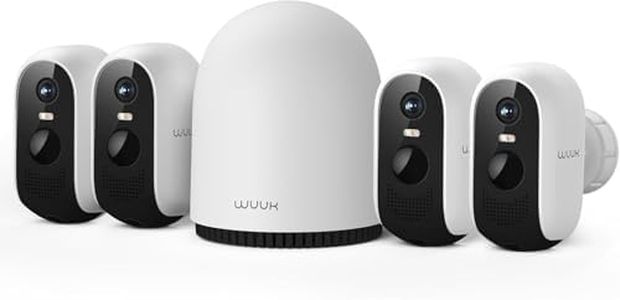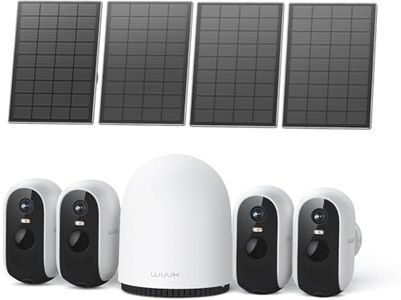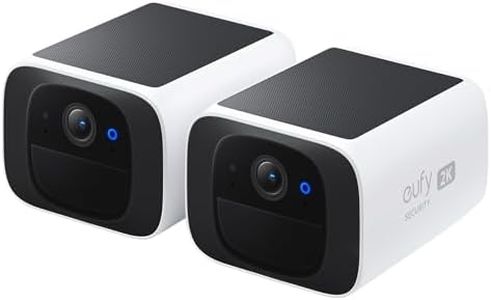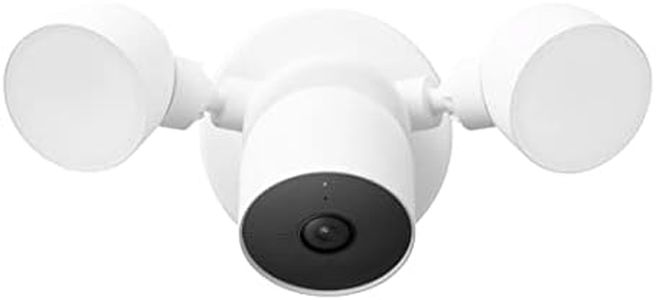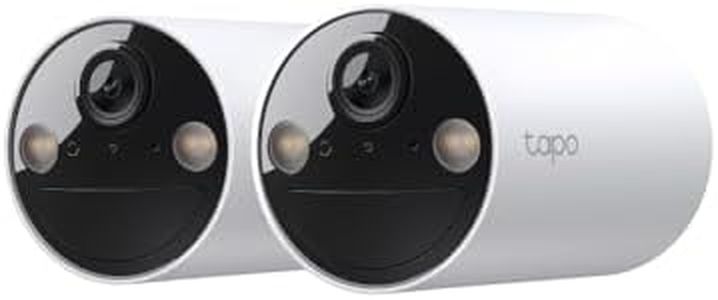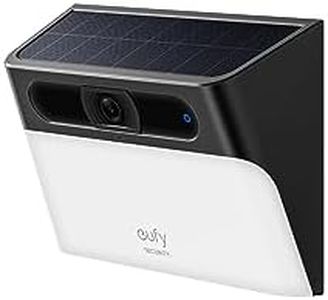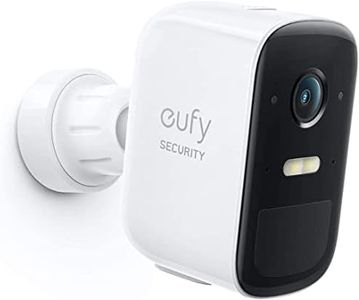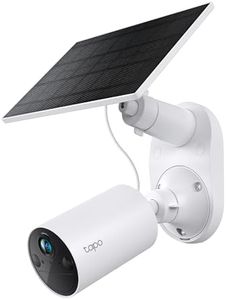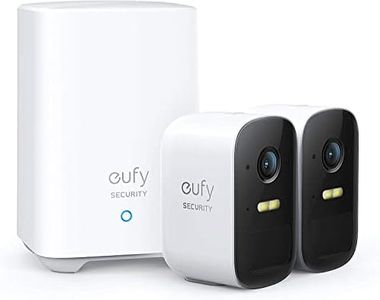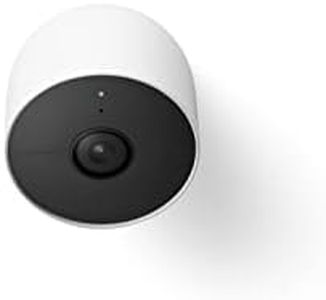We Use CookiesWe use cookies to enhance the security, performance,
functionality and for analytical and promotional activities. By continuing to browse this site you
are agreeing to our privacy policy
10 Best Outdoor Camera For Google Home
From leading brands and best sellers available on the web.Buying Guide for the Best Outdoor Camera For Google Home
Choosing an outdoor camera compatible with Google Home is a smart idea if you want to keep an eye on your property and get alerts or watch footage using simple voice commands or your smart displays. When you set out to choose the right camera, it’s important to think about your environment, what you want from your camera (like live viewing, recording, or smart alerts), and how it will fit into your existing Google Home setup. Being clear about these needs will make it easier to sift through the many choices out there and avoid ending up with a camera that doesn’t suit your home.Google Home CompatibilityThis spec means the camera can connect to and be controlled by Google Home devices and the Google Assistant, allowing you to view feeds on devices with screens and get voice alerts. Compatibility is crucial because not all cameras work seamlessly with Google Home. Cameras may be billed as 'Works with Google Home' or 'Google Assistant compatible.' Always look for clear signs on the product’s packaging or description. Some may offer full support (streaming video to your Google Nest Hub) while others only support notifications. If controlling and viewing your camera through Google Home is a must, confirm these functionalities before buying.
Video ResolutionVideo resolution refers to the clarity and detail of the images the camera captures, commonly found in 720p (HD), 1080p (Full HD), and 4K (Ultra HD). Higher resolutions give clearer images and are better for identifying faces or license plates, especially if you need to zoom in after recording. If you mainly want to monitor general activity, 1080p is often a strong balance between clarity and storage needs. For maximum detail (like at a driveway or gate), 4K may be worth it. However, higher resolution also means more storage space and bandwidth usage, so consider your internet connection and recording plan.
Field of ViewThis refers to how wide an area the camera can see, usually described in degrees. Standard outdoor cameras range from 100° to 180°. A wide field of view (above 120°) covers more area, so you need fewer cameras for full coverage, but the image can look slightly stretched. For narrow spaces like alleys, a smaller field of view may actually be better. Walk around the spot you plan to install the camera—if it’s overlooking a broad yard, wide-angle is helpful, but for doorways or focused monitoring, narrower views focus on detail.
Night VisionNight vision is the camera’s ability to provide usable images in complete darkness, using infrared LEDs or other low-light technologies. The effective night vision range (often 20-100 feet or more) is important—shorter ranges may be enough for entryways, while you’ll want longer ranges for open yards. Higher quality night vision provides clearer and less grainy images. If you expect to monitor large, dark areas or want to see faces clearly at night, pay extra attention to both the range and quality of night vision when choosing.
Weather ResistanceWeather resistance means the camera is built to withstand rain, dust, snow, heat, and cold, usually rated by the IP code (Ingress Protection), such as IP65, IP66, or IP67. The higher the number, the more resistant it is. For most outdoor settings, an IP65 rating is the minimum you should accept. If you live in an area with severe weather or want to mount the camera in an exposed spot, look for the highest rating you can. For milder climates or sheltered spots, a lower (yet still outdoor-rated) IP level will do.
Power SourceCameras can be wired (plugged in), battery-operated, or solar-powered. Wired cameras need power from an outlet and offer consistent operation without worrying about recharging, but may limit placement flexibility. Battery-powered cameras can be mounted almost anywhere and are good if you don’t have outlets nearby, but do need periodic recharging or battery swaps. Solar options can keep battery cameras topped up, helpful if you want low-maintenance operation in sunny locations. Choose based on where you want to install the camera and how much effort you’re willing to put into upkeep.
Smart Alerts and Motion DetectionThis refers to the camera’s ability to detect movement and send you notifications. Smarter systems can differentiate between people, animals, and vehicles, reducing false alarms. Some cameras let you set activity zones or adjust sensitivity. If you want to minimize unnecessary alerts or only care about certain types of activity, look for advanced detection features. For busy streets or yards with lots of pets, these features can make alerts much more useful and less annoying.
Storage OptionsStorage determines how and where the camera saves its video footage, which can be cloud-based, local (memory card), or both. Cloud storage means you can access videos from anywhere, but it may require a subscription. Local storage (memory card or hard drive) is subscription-free but may be less secure and not accessible remotely. Decide how long you want footage to be available and how you prefer to access it. For important events or if you’re often away, cloud storage can be worth considering, but for more privacy and control, local storage works best.
